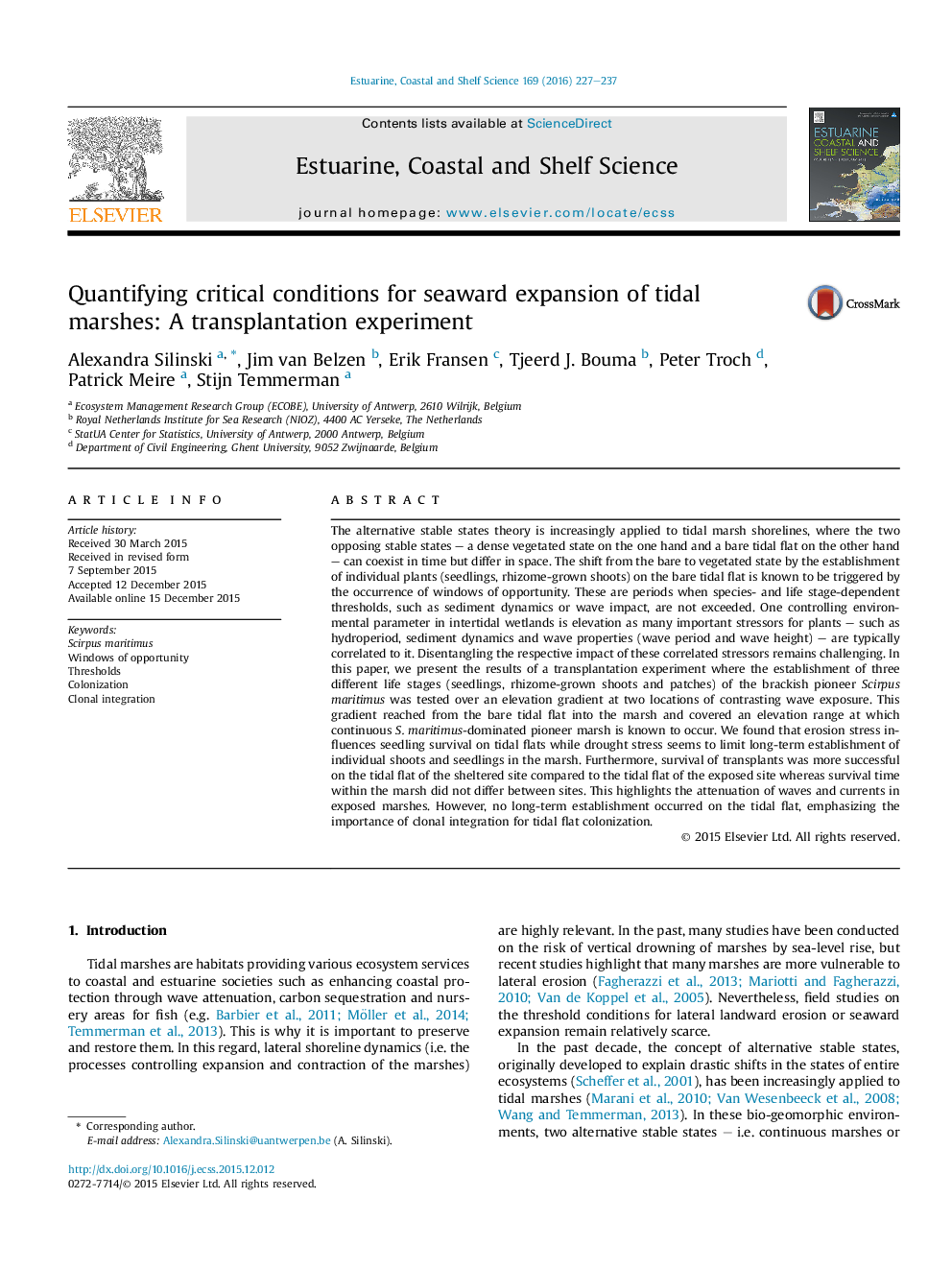| Article ID | Journal | Published Year | Pages | File Type |
|---|---|---|---|---|
| 6384538 | Estuarine, Coastal and Shelf Science | 2016 | 11 Pages |
Abstract
The alternative stable states theory is increasingly applied to tidal marsh shorelines, where the two opposing stable states - a dense vegetated state on the one hand and a bare tidal flat on the other hand - can coexist in time but differ in space. The shift from the bare to vegetated state by the establishment of individual plants (seedlings, rhizome-grown shoots) on the bare tidal flat is known to be triggered by the occurrence of windows of opportunity. These are periods when species- and life stage-dependent thresholds, such as sediment dynamics or wave impact, are not exceeded. One controlling environmental parameter in intertidal wetlands is elevation as many important stressors for plants - such as hydroperiod, sediment dynamics and wave properties (wave period and wave height) - are typically correlated to it. Disentangling the respective impact of these correlated stressors remains challenging. In this paper, we present the results of a transplantation experiment where the establishment of three different life stages (seedlings, rhizome-grown shoots and patches) of the brackish pioneer Scirpus maritimus was tested over an elevation gradient at two locations of contrasting wave exposure. This gradient reached from the bare tidal flat into the marsh and covered an elevation range at which continuous S. maritimus-dominated pioneer marsh is known to occur. We found that erosion stress influences seedling survival on tidal flats while drought stress seems to limit long-term establishment of individual shoots and seedlings in the marsh. Furthermore, survival of transplants was more successful on the tidal flat of the sheltered site compared to the tidal flat of the exposed site whereas survival time within the marsh did not differ between sites. This highlights the attenuation of waves and currents in exposed marshes. However, no long-term establishment occurred on the tidal flat, emphasizing the importance of clonal integration for tidal flat colonization.
Related Topics
Physical Sciences and Engineering
Earth and Planetary Sciences
Geology
Authors
Alexandra Silinski, Jim van Belzen, Erik Fransen, Tjeerd J. Bouma, Peter Troch, Patrick Meire, Stijn Temmerman,
